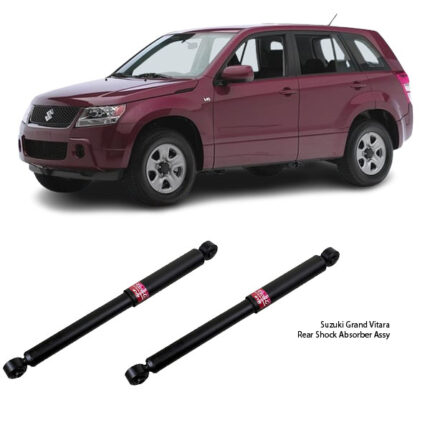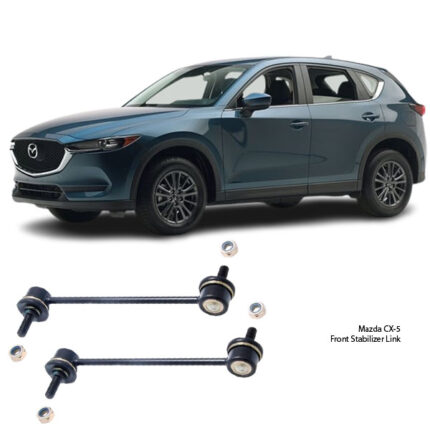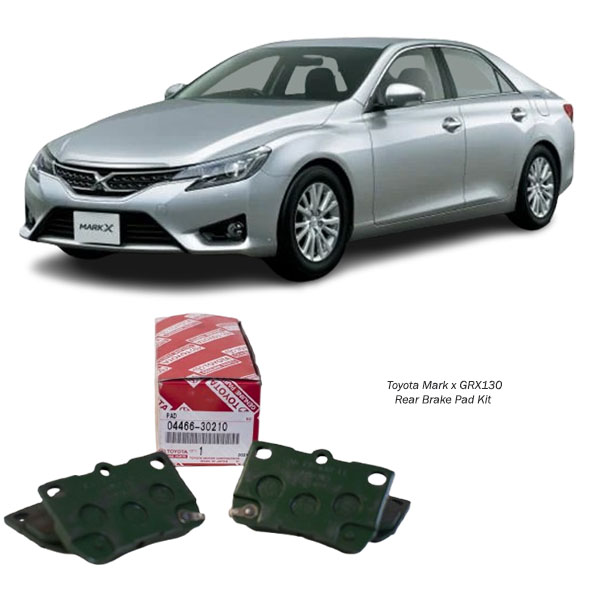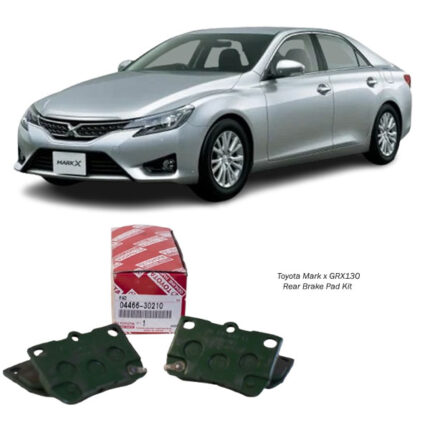Get Toyota Mark x GRX130 Rear Brake Pad Kit 04466-30210 in Kenya
Brakes are one of the most important safety components in your vehicle. They ensure smooth and safe stopping, preventing accidents and giving you control over your car. Among the braking system’s key components are the brake pads, which create friction against the brake rotors to slow down or stop the vehicle.
Over time, brake pads wear down and require replacement. If you’re experiencing squeaking, grinding, or longer stopping distances, it’s time for a rear brake pad kit replacement. In this guide, we’ll discuss everything you need to know about rear brake pads, including their function, types, signs of wear, installation, costs, and maintenance tips.
What is a Rear Brake Pad Kit? 🔩🛠️
A rear brake pad kit typically includes:
✅ Brake Pads – The friction material that presses against the brake rotor to slow down the car.
✅ Shims & Clips – Helps reduce noise and ensure proper pad alignment.
✅ Brake Lubricant – Reduces noise and wear on contact points.
✅ Hardware Kit (optional) – May include bolts, springs, or wear sensors, depending on the kit.
How Do Rear Brake Pads Work? ⚙️💨
When you press the brake pedal, a series of actions take place:
1️⃣ Brake fluid pressure increases, sending force to the brake calipers.
2️⃣ Calipers squeeze the brake pads against the rotating brake rotors.
3️⃣ Friction is generated, slowing down the wheel and vehicle.
Unlike front brakes, which handle most of the braking force (about 70-80%), rear brakes play a vital role in vehicle stability and stopping efficiency.
Types of Rear Brake Pads 🛞🔩
There are different materials used in brake pads, each offering specific advantages and drawbacks.
1️⃣ Ceramic Brake Pads 🏁
✔️ Long lifespan & minimal dust
✔️ Quiet operation
✔️ Best for everyday driving
❌ More expensive than other types
❌ Not ideal for heavy towing or performance vehicles
2️⃣ Semi-Metallic Brake Pads 🚙
✔️ High durability & great stopping power
✔️ Good for performance and heavy-duty vehicles
✔️ Handles high temperatures well
❌ Can be noisy
❌ Wears down rotors faster
3️⃣ Organic (Non-Asbestos) Brake Pads 🌱
✔️ Affordable & quiet
✔️ Softer material means less rotor wear
✔️ Suitable for light vehicles
❌ Wears out faster
❌ Not ideal for heavy braking conditions
4️⃣ Low-Metallic NAO Brake Pads 🏎️
✔️ Better braking performance than organic pads
✔️ Contains copper/steel for improved heat dissipation
❌ Can produce more brake dust and noise
Which one is best?
-
Ceramic pads are ideal for daily drivers who want longevity and quiet operation.
-
Semi-metallic pads are better for performance cars, trucks, and SUVs that need heavy-duty braking power.
Signs You Need to Replace Your Rear Brake Pads 🚨🔧
Brake pads are wear-and-tear components, meaning they will eventually need replacement. Here are key warning signs:
1️⃣ Squeaking or Squealing Noises 🔊
-
If you hear a high-pitched squeal when braking, your pads are worn down.
-
Some brake pads have a wear indicator, which makes a noise when the pads are too thin.
2️⃣ Grinding Noise ⚙️
-
A grinding sound means the brake pad material is completely worn and the metal backing is rubbing against the rotor.
-
This can damage the rotors, leading to expensive repairs.
3️⃣ Longer Stopping Distance 🚗💨
-
If your vehicle takes longer to stop than usual, the brake pads are likely worn out.
4️⃣ Brake Pedal Feels Soft or Spongy 🦶
-
If the brake pedal feels soft or goes to the floor easily, there may be a brake fluid leak or worn pads.
5️⃣ Dashboard Brake Warning Light 🚨
-
Some modern vehicles have brake wear sensors that trigger a warning light when the pads are worn down.
6️⃣ Vibration While Braking 🔄
-
If you feel vibrations when braking, it may indicate uneven brake pad wear or warped rotors.
How to Replace Rear Brake Pads 🔄🔩
If you’re a DIY car enthusiast, changing rear brake pads is a moderate-difficulty job.
Tools Needed 🛠️
✔️ Jack & jack stands
✔️ Lug wrench
✔️ Socket wrench set
✔️ C-clamp or brake caliper tool
✔️ Brake cleaner
✔️ New brake pads
✔️ Brake grease
Step-by-Step Replacement Guide 🚗🔧
1️⃣ Secure the Car & Remove the Wheels
-
Park the car on a flat surface and engage the parking brake.
-
Loosen the lug nuts, jack up the car, and remove the rear wheels.
2️⃣ Remove the Brake Caliper
-
Use a socket wrench to remove the caliper bolts.
-
Carefully slide the caliper off (do not let it hang by the brake hose).
3️⃣ Remove Old Brake Pads
-
Slide out the old brake pads from the caliper bracket.
4️⃣ Install the New Brake Pads
-
Apply brake grease on the back of the pads and install them into the caliper bracket.
5️⃣ Compress the Brake Piston
-
Use a C-clamp or brake caliper tool to push the piston back in.
-
This makes room for the new, thicker brake pads.
6️⃣ Reinstall the Brake Caliper
-
Place the caliper back over the brake pads and tighten the bolts.
7️⃣ Reinstall the Wheels & Lower the Car
-
Put the wheels back on, tighten the lug nuts, and lower the car.
8️⃣ Pump the Brake Pedal
-
Before driving, press the brake pedal multiple times to ensure the pads seat properly.
Rear Brake Pad Kit Cost 💰
The cost of a rear brake pad kit varies depending on the brand and type:
DIY Replacement Cost
-
Brake pad kit: $30 – $150
-
Brake cleaner & grease: $10 – $20
-
Total DIY cost: $40 – $170
Professional Replacement Cost
-
Parts & Labor: $150 – $400 (varies by vehicle and location)
🔹 Luxury & performance cars have more expensive brake systems, costing $500+ for a full rear brake service.
Tips for Extending Rear Brake Pad Life 🏁
✔️ Brake smoothly & avoid sudden stops – This reduces unnecessary wear.
✔️ Use engine braking on steep descents – Helps reduce brake pad stress.
✔️ Keep the brake system clean – Remove dirt and debris to prevent premature wear.
✔️ Inspect brake fluid regularly – Old or contaminated fluid affects braking efficiency.
✔️ Replace worn rotors – Worn rotors can cause brake pads to wear unevenly.
Final Thoughts 🎯
A rear brake pad kit is essential for maintaining your vehicle’s braking performance and safety. Worn-out brake pads can compromise stopping power, damage rotors, and increase the risk of accidents.
If you hear squealing, grinding, or feel a longer stopping distance, it’s time to replace your rear brake pads. Whether you choose ceramic, semi-metallic, or organic brake pads, ensuring proper installation and maintenance will keep your car stopping safely for miles to come!
Follow us on Facebook for more parts.




